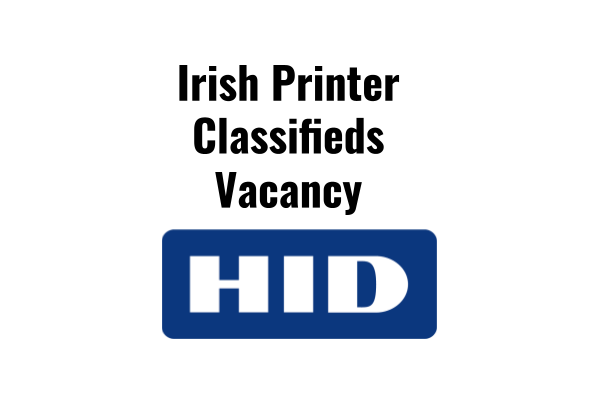Eugene Healy, President of the Irish Printing Federation, talks to Irish Printer about the repercussions from An Post’s latest round of price increases
Earlier this year, An Post announced its latest raft of price increases. These rises saw business bulk rates increase by approximately 10%, meter prices go from 90c to 95c and the international standard rate increase from €1.35 to €1.50. The price of a stamp, which had undergone an increase in 2017, stayed the same and this was the good news story that did the rounds last March. The effect that these changes had and continue to have on printers didn’t hit the headlines in quite the same way.
The latest round of price increases has primarily affected commercial bulk rates. This, says President of the Irish Printing Federation, Eugene Healy, can’t be seen as anything other than an anti-business move. “The almost annual price increases we’re seeing from An Post and in particular, the most recent one, will force organisations to increasingly opt for electronic methods of communication. Financial institutions and utility firms will be forced to use less traditional mail and that’s bad news for the industry.” An Post’s solution to falling profits, that is to increase the price of mail to compensate for falling revenue streams, only serves to compound the situation further. “It will drive more people to electronic means. How does that help the situation? Every letter that goes through someone’s letterbox has a piece of printed matter in it of some description, be it a bank statement or a booklet. A print firm is printing these items. This increase is affecting print jobs and is, essentially, damaging the industry.”
The effects of these changes are being felt across the industry. “Print companies are complaining bitterly about the level of increases, particularly in the commercial bulk rates. I investigated the matter with the Government but was informed it doesn’t interfere with the running of An Post.” Eugene feels there’s a damaging, serious disconnect between An Post and Irish businesses. “The higher these rates go, the more people will move to electronic. I don’t know how far mail volumes are going to fall because of this. The traditional letter is going to be killed by continued increases. I know post is expensive to deliver but the current approach is an extremely anti-business measure. Print companies are now going to print less and print volumes are going to be smaller. There’s a very real domino effect with this.”
The situation is out of the Federation’s and indeed the industry’s control. Digital technology has certainly had a profound effect on print and there is, says Eugene, a natural shift happening anyway. “We’re in a regressing business whether we like it or not but that doesn’t mean the situation should be accelerated even further. A large number of print companies are adapting to these changing times and diversifying. They’re doing smaller runs and have become more flexible to cope with a changing market. That’s very encouraging but despite that, last year when the big hike went through, a lot of mailing stopped in its tracks. It picked up but here we are again, hit with another substantial increase.”
Another issue for printers is the lack of notice they’re getting when it comes to price hikes. “If you’re conducting a mailing campaign and you’re budgeting a certain amount for post, how much do you budget? Should you be building potential increases into your budget? This is another, very practical consideration for printers.”
This is a matter of some urgency says Eugene, but one that doesn’t seem to have a resolution. Unless An Post agrees to stop increasing the postal rates, the ill effects of these changes will continue to be felt across the industry.
Increasing postal rates is just one issue that’s affecting the industry. Another is the apprenticeship scheme and the repercussions associated with a lack of skilled trade that will undoubtedly be felt in the next few years. The Irish Printing Federation recently contacted Irish printers across Ireland. About 850 firms received a letter from the IPF; only 14 replied. Apprenticeships and the lack thereof is an issue that the IPF is passionate about but not one, it appears, that the industry is concerned about. “In our opinion, what’s happening is that a lot of printers are moving to digital. If necessary, they’re going out to trade houses and getting litho done there. Training someone on digital probably only takes a couple of weeks and doesn’t require an apprenticeship.”
Despite this shift to digital, the fact that no new apprentices entered DIT this year is a poor indictment on the industry. “Currently, the signs don’t look good for print. With a weak sterling we’re seeing imports coming into Ireland and added to that, wage rates in Ireland are higher than those in the UK. When these factors are combined with a lack of skilled tradespeople, you’re facing into an industry under severe strain.”
If the statutory apprenticeship scheme is entirely disbanded, would-be apprentices would have to be paid by print firms. For an industry still in recovery mode after a period of intense economic uncertainty, that could simply be impossible. “Print firms may also have the extra worry of investing in an apprentice only to have them move to another country after their training. But if you want to be a progressive company, you must invest in training. If firms fail to invest in apprentices right now, the sector will contract even further and the firms that are left will be in such high demand that they’ll make a fortune. Apprentices are vital to the industry and hopefully, we can find a way to maintain the scheme in some form.”








